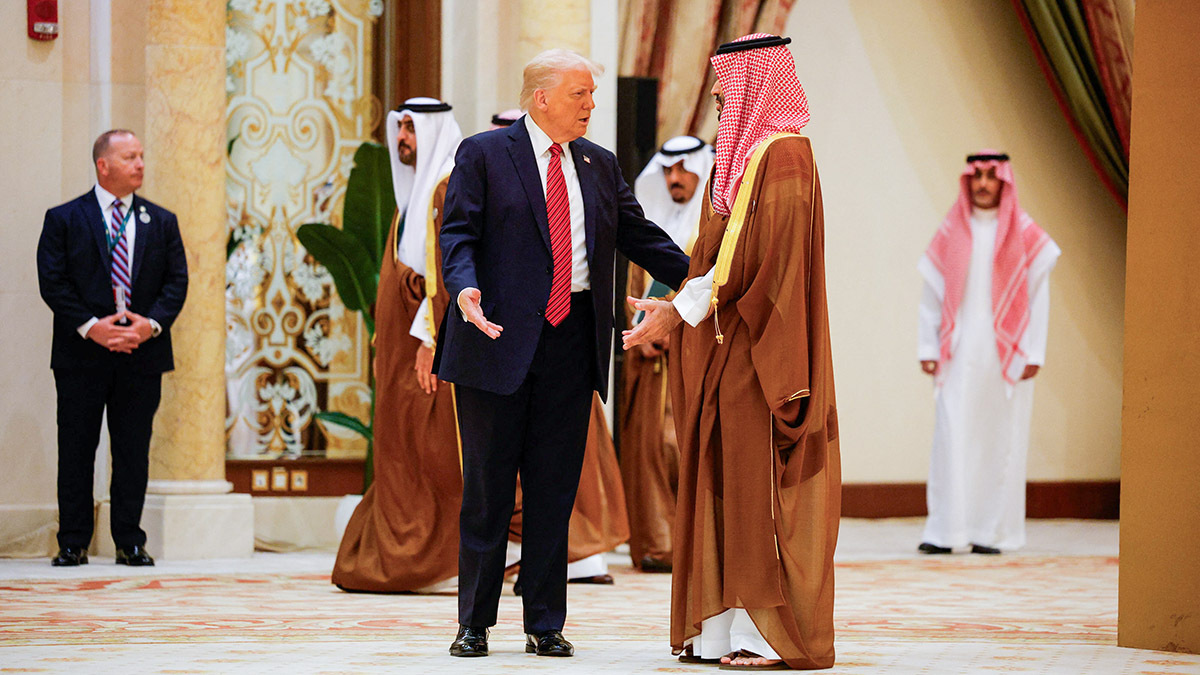
Trump’s Middle East Tour: Strategy Shift or Symbolism?
Trump’s Middle East Tour: Strategy Shift or Symbolism?. During his recent diplomatic mission to the Gulf region, President Trump struck a series of high-stakes agreements and announced the lifting of long-standing sanctions on Syria. But do these developments indicate a fundamental shift in America’s strategic posture toward the Middle East?
High-Value Deals and Strategic Engagements
Earlier this month, President Trump embarked on his first official overseas tour, making stops in Saudi Arabia, the United Arab Emirates, and Qatar. Against a backdrop of grandeur and ceremony, Trump and Gulf leaders unveiled a cascade of mega-deals spanning trade, defense, energy, and technology.
Saudi Arabia alone committed a staggering $600 billion in investments targeting U.S. industries, coupled with $142 billion in military contracts. The UAE and Qatar also pledged similarly large-scale financial commitments. As a result, these partnerships appear to mark a new era in U.S.-Gulf cooperation.
Redefining U.S. Foreign Policy in the Region
Speaking at the Saudi-US Investment Forum, President Trump took the opportunity to articulate a revised U.S. approach to the Middle East. He criticized the interventionist policies of previous administrations, which he claimed led to disastrous outcomes under the guise of promoting democracy.
Instead, Trump advocated for regional powers to take the lead in resolving local issues. He clearly distanced his administration from ideologically driven foreign interventions. Therefore, many analysts believe this signals a break from America’s past approaches.
Sanctions Lifted: A Turning Point on Syria?
Underscoring this new direction, Trump announced the lifting of sanctions on Syria—effectively ending a 14-year freeze in diplomatic engagement. This move has received enthusiastic support from Gulf nations, long eager for renewed Western involvement with Syria’s emerging leadership.
In a historic gesture, Trump met with Syrian President Ahmed al-Shara, marking the first direct U.S.-Syrian leadership contact since 2000. During their talks, Trump urged al-Shara to consider normalizing ties with Israel, an idea reportedly under serious consideration. Consequently, this development could reshape alliances in the region. U.S. foreign policy in the Middle East
Key Questions Surrounding U.S. Strategy
These dramatic developments raise crucial questions. What are the wider geopolitical implications of Trump’s Middle East visit? Why did he skip a stop in Israel, especially given the tensions in Gaza and rumors of diplomatic normalization with Saudi Arabia?
How might this impact the already fragile U.S.-Iran relationship? And more broadly, what lies ahead for America’s enduring role in the region? Clearly, these questions merit deeper analysis and attention.
Expert Analysis with Greg Priddy
To explore these pressing issues, Paul Saunders interviews Greg Priddy on this episode of Three Questions. Priddy, a Senior Fellow for the Middle East at the Center for the National Interest, brings deep expertise in regional politics and energy security. Saudi Arabia U.S. investments
He previously led global oil analysis at Eurasia Group and worked with the U.S. Energy Information Administration. His insights have appeared in top-tier publications including The New York Times, Barron’s, and Nikkei Asia.
Main Points
-
Trump’s Gulf Tour: President Trump visited Saudi Arabia, the UAE, and Qatar on his first official foreign trip.
-
Massive Deals Signed: Multi-billion-dollar agreements were signed across sectors like trade, defense, energy, and technology.
-
Saudi Investments: Saudi Arabia pledged $600 billion in U.S. investments and $142 billion in arms deals.
-
Shift in Foreign Policy: Trump criticized past U.S. interventionism and promoted regional self-reliance in solving Middle East issues.
-
Syria Sanctions Lifted: Trump announced the end of U.S. sanctions on Syria after 14 years, signaling a policy change.
-
Gulf States’ Approval: Gulf countries welcomed renewed Western engagement with Syria’s government. Trump Middle East
-
Historic U.S.-Syria Meeting: Trump met with Syrian President Ahmed al-Shara, the first such meeting since 2000.
-
Push for Israel Normalization: Trump encouraged Syria to consider normalizing relations with Israel.
-
Unanswered Questions:
-
Why didn’t Trump visit Israel?
-
How will this affect U.S.-Iran relations?
-
What is the long-term U.S. strategy in the Middle East?
-
-
Expert Analysis: Paul Saunders discusses these questions with Middle East policy expert Greg Priddy on Three Questions.
Vocabulary
-
Whirlwind
Meaning: A situation or series of events that happens very quickly and is often confusing or overwhelming. -
Lavish
Meaning: Rich, elaborate, or luxurious in nature; given in large amounts without concern for cost. -
Ideological
Meaning: Based on a set of beliefs or philosophy, often related to political or economic systems. -
Crusade
Meaning: A vigorous campaign for political, social, or religious change. -
Disengagement
Meaning: The act of withdrawing from involvement in a situation, especially in political or military contexts. -
Normalization
Meaning: The process of bringing or returning something to a standard or expected state, often referring to diplomatic relations. -
Sanctions
Meaning: Penalties or restrictive measures imposed by one country against another to influence behavior or policies. -
Interventionist
Meaning: Favoring or practicing interference by a country in another’s affairs, especially militarily or politically. -
Posturing
Meaning: Behavior that is intended to impress or mislead others, often without genuine intent or substance. -
Geopolitical
Meaning: Related to the influence of geographic factors on politics, especially international relations.

